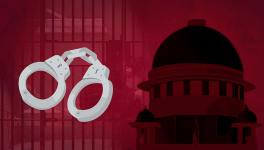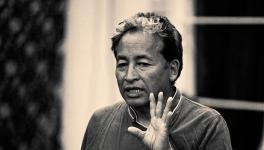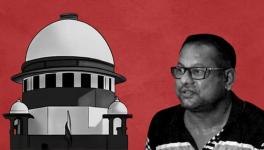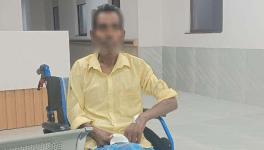Establishing the Procedure to Die
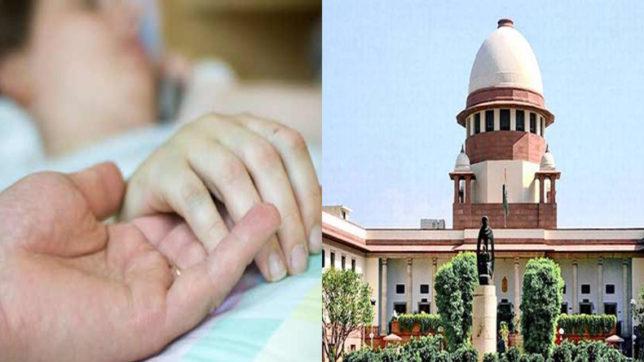
Image Courtesy: www.newsx.com
The Supreme Court in the case of Common Cause (A Regd. Society) v. Union of India and Anr. delivered its Judgment on March 8. The Judgement has been hailed as the Court’s recognition of the ‘right to die with dignity’, the main Judgement dealt with the substantive legal questions, based on which it provided procedural guidelines. The guidelines are based on the Court’s acceptance that living with dignity includes dying with dignity. To this effect a distinction was made between active and passive euthanasia. Active euthanasia would entail doing an act that results in the death of the individual, whereas passive euthanasia means abstaining from doing an act which would otherwise unnaturally prolong the life of the individual. In this regard, the Court provided for the introduction of ‘Advance Medical Directives’ (AMDs). Advance Medical Directives are to be executed by an individual specifying under what circumstances medical treatment should not be administered. The Court laid down the procedure to be followed for executing an AMD, how it is to be used, as well as the procedure to be followed in its absence.
An AMD can only be executed by an adult whose state of mind is sound and healthy. This adult must be in a position to communicate, relate and comprehend the purpose and consequences of executing the document. It must be executed without any elements of coercion, inducement nor compulsion, and it should be done with the informed consent of the executor. The AMD must be in writing and clearly state when medical treatment may be withdrawn, or that no specific medical treatment that only delays death and prolongs pain shall be administered.
The AMD should also indicate clearly and unambiguously the decision relating to the circumstances under which withholding or withdrawing medical treatment can be resorted to. It should also mention that the executor may revoke the AMD at any time. The AMD must disclose that the executor has understood the consequences of executing such a document. The document must specify the name of a guardian or close relative who will be authorised to give consent in the event of the executor becoming incapable of taking decisions for treatment at the relevant time. If there is more than one AMD executed, only the most recent one will be considered.
For the document to be given legal effect, it must be signed by the executor in the presence of two attesting witnesses, preferably independent, and countersigned by the jurisdictional Judicial Magistrate of First Class (JMFC) designated for this purpose by the concerned District Judge. At the time of attestation, the witnesses and the JMFC must record their satisfaction that the document has been executed voluntarily and without any coercion or inducement or compulsion and with full understanding of all the relevant information and consequences. The JMFC will also be required to retain one hard copy and one soft copy of the AMD. The JMFC must forward one copy of the document to the Registry of the jurisdictional District Court for being preserved, where it shall be retained in digital format as well as to the competent officer of the local government, and a competent official will be nominated to act as the custodian of such documents. In cases where the executor has a family physician, a copy must be provided by the JMFC. If the family members of the executor were not present at the time of execution, the JMFC must inform the immediate family members of the executor, as well as make them aware of the implications.
When the executor becomes terminally ill, the procedure becomes more rigorous. The treating physician once aware of the AMD must first verify it with the JMFC. The AMD can only be acted upon if the executor is undergoing treatment despite no hope for recovery. If the physician believes that the condition is severe enough to follow the AMD, then this decision must be communicated to the executor. If the executor is indisposed, then to the guardian or close relative. Only after the situation has been fully understood can the executor or the guardian or close relative take the decision to withdraw or refuse treatment. Upon communicating this decision, the physician or hospital will then be required to constitute a Medical Board. The Medical Board will consist of the Head of the treating Department and at least three experts from general medicine, cardiology, neurology, nephrology, psychiatry or oncology with experience in critical care and with overall standing in the medical profession of at least twenty years. The Board will then visit the patient in the presence of the guardian or close relative and determine whether support or treatment should be stopped. The decision of the Board will be the preliminary opinion.
If the decision of the Board is to follow the contents of the AMD, then the hospital or physician must inform the jurisdictional Collector. The Collector will then constitute another Board consisting of the Chief Medical Officer, and three expert doctors from the previously mentioned fields with at least twenty years of experience. However, no member of this Board can be on the Board constituted by the hospital or physician. If they too come to the same decision as the previous Board, then they may endorse the certificate to carry out the AMD. The Collector’s Board must also ascertain the wishes of the patient, or the guardian nominated in the AMD, if the patient is indisposed. After the Chief Medical Officer has arrived at a decision, the same must be conveyed to the JMFC, who must then visit the patient before authorising the decision of the Board. The executor may at any point revoke the document before it is acted upon.
If the Collector’s Board refuses permission to withdraw medical treatment, the executor, relatives, or the treating physician may move the High Court under Article 226. Such an application will be heard by a Division Bench Constituted by the Chief Justice. The application must be heard expeditiously, keeping in mind the best interests of the patient, while giving the State Counsel an opportunity to be heard. The High Court may constitute a Medical Board consisting of three doctors with the same afore mentioned qualifications to examine the patient and submit a report on the feasibility of acting upon the AMD.
To revoke an AMD, the procedure is the same as for executing it. The revocation must be done in writing. An AMD will become inapplicable if unanticipated circumstances arise. It will also be inapplicable if the AMD is ambiguous. If the hospital’s Board decides not to follow the AMD, they must communicate their decision to the Collector’s Board for further directions.
For patients who have not executed an AMD and are terminally ill with no hope of recovery, the physician will inform the hospital to constitute a Board. The Board will then meet with the patient and the family members and appraise them of the situation. The minutes of the meeting will be recorded. The decision of the family of the patient must be given in writing and will be treated as the preliminary opinion. From this point on the procedure to be followed is the same as when an AMD has been executed.
Get the latest reports & analysis with people's perspective on Protests, movements & deep analytical videos, discussions of the current affairs in your Telegram app. Subscribe to NewsClick's Telegram channel & get Real-Time updates on stories, as they get published on our website.










